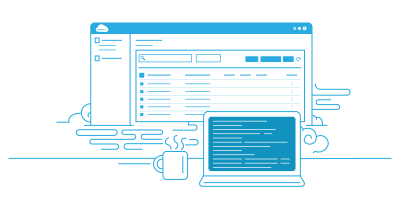Web developers use Amazon S3 as a versatile, scalable storage solution for web assets. They typically store static files like images, videos, CSS, JavaScript, and HTML files. Amazon S3 Intelligent-Tiering is a storage class designed to optimize costs by automatically moving data to the most cost-effective access tier without performance impact or operational overhead. For web developers managing assets on Amazon-hosted websites, Intelligent-Tiering can significantly reduce storage costs while maintaining high performance. We’ll outline optimizing Amazon S3 cost with Intelligent-Tiering for web assets.
Intelligent-Tiering works by monitoring access patterns of objects and moving them between two access tiers: frequent access and infrequent access. Objects accessed less frequently are automatically moved to the lower-cost infrequent access tier, while those that become frequently accessed are moved back to the frequent access tier.
How to Implement Intelligent-Tiering for Web Assets
1. Identify Suitable Assets
Start by identifying assets that have unpredictable or changing access patterns. These could include older blog posts, archived content, or seasonal promotional materials.
2. Enable Intelligent-Tiering
You can enable this feature when uploading new objects or change the storage class for existing objects. This can be done through the AWS Management Console, AWS CLI, or SDKs.
3. Set Minimum Object Size
Intelligent-Tiering is most cost-effective for objects larger than 128KB. For smaller objects, consider using the Standard storage class.
4. Monitor and Analyze
Use Amazon S3 Analytics to gain insights into your storage access patterns and optimize your storage classes accordingly.
5. Implement Lifecycle Policies
For assets with predictable access patterns, combine Intelligent-Tiering with lifecycle policies to move objects to even cheaper storage classes like Glacier for long-term archival.
Benefits of Using Intelligent-Tiering for Web Assets
Cost Savings
Automatically optimize storage costs based on actual usage patterns.
Performance
Maintain low latency and high throughput performance for frequently accessed objects.
Simplicity
Eliminate the need to manually move objects between tiers.
Flexibility
Intelligent-Tiering works well for assets with changing or unpredictable access patterns.
Challenges of Using Intelligent-Tiering for Web Assets
Monitoring Fees
There’s a small monitoring and automation fee per object.
Minimum Storage Duration
Objects should be stored for at least 30 days to benefit from the cost savings.
Object Size
It’s most effective for objects larger than 128KB.
How to Maximize the Benefits of Using Intelligent-Tiering
1. Regularly review your S3 usage and costs to ensure you’re using the most appropriate storage classes.
2. Use S3 Inventory to maintain visibility into your stored objects and their metadata.
3. Combine Intelligent-Tiering with other S3 features like Transfer Acceleration or Requester Pays to further optimize costs and performance.
4. Consider using S3 Batch Operations to change the storage class of existing objects in bulk.
Amazon S3 Intelligent-Tiering offers web developers a powerful tool to optimize storage costs for their assets without compromising performance or increasing management complexity. By automatically moving data between frequent and infrequent access tiers based on usage patterns, it provides a balance of cost-efficiency and high performance. While there are considerations such as monitoring fees and minimum object sizes, the cost savings, simplicity, and flexibility make it an attractive option for managing web assets. Leveraging Intelligent-Tiering can lead to more efficient resource allocation, potentially freeing up budget for other aspects of web development and infrastructure management.
Learn more about optimizing S3 costs.



Leave A Comment